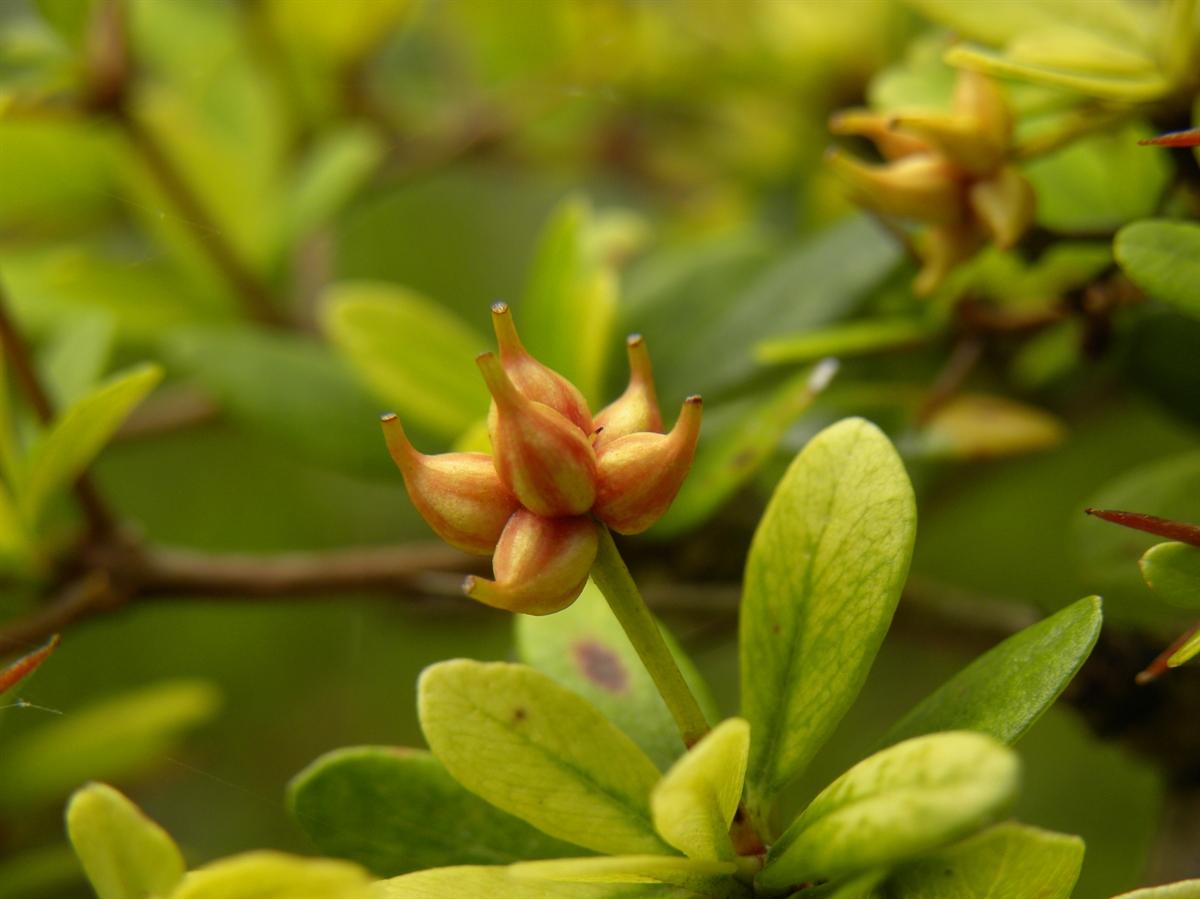Habit: Terminalia molinetii grows as a shrub or small tree up to 8 meters in height with a trunk to 20 cm in diameter. The branches divaricate creating a horizontally flattened, zigzag branching system. Spines occur below leaf attachments. The glabrous leaves are sessile, oblanceolate, to 3 cm in length with and entire margin and obtuse leaf apex.
The incomplete, perfect, actinomorphic flowers are arranged in short spikes. The calyx has 5 fused greenish sepals. There is no corolla. There are 8 or 9 unfused stamens in 2 series. The ovary is inferior with a single locule and seed. The fruit is a drupe at maturity.
Habitat: Terminalia molinetiigrows primarily in wet, coastal Dry Broadleaf Evergreen Formation- Woodlands and Shrublands (coppice and wet savannahs).
Distribution: Terminalia molinetii occurs throughout the Lucayan Archipelago as well as the Florida Keys, Cuba, and Mexico.
Medicinal/Cultural/Economic usage: Terminalia molinetii is used in the horticultural industry for its unique branching pattern as well as for creating bonsai’s.
Terminalia molinetii is not known to be used medicinally in the Lucayan Archipelago.



